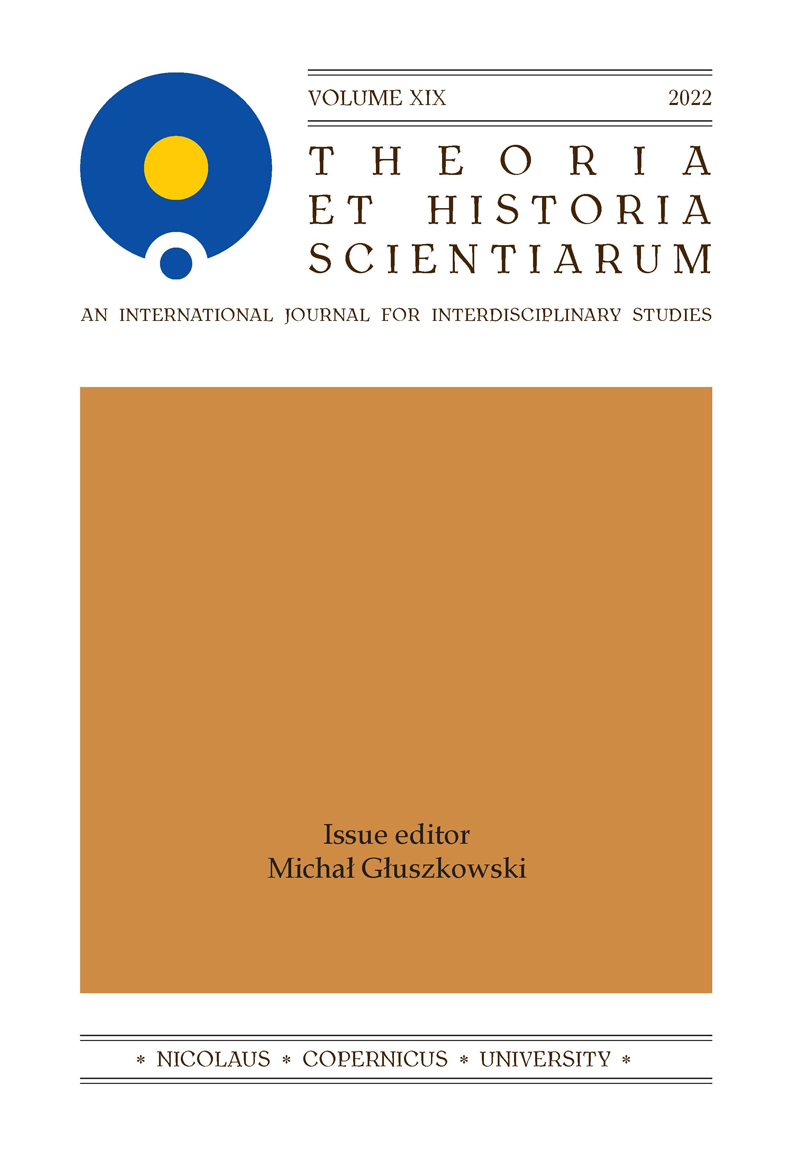From traditional media to the Internet
Linguistic aspects of communication on Facebook among citizens 50+
DOI:
https://doi.org/10.12775/ths.2022.003Abstract
This article is an attempt to describe the linguistic aspects of communication among citizens 50+ active on Facebook (their biolect). These are people from generations who were originally socialized to traditional media and are just undergoing the process of adapting to new forms of communication. The research was conducted on the basis of 150 statements collected on Facebook in the period from December 2020 to the end of February 2021. During the analysis, four of seven forms characteristic for netspeak were observed, as well as the transfer of forms characteristic for traditional media to social media and appearance of atypical expression’s forms (e.g. a quantitative advantage of polite phrases over vulgarisms), which counterbalance the linguistic tendencies in the new media.
References
Arciszewski, D. (2019). Starzy ludzie i Facebook. Zapuściłem się w najbardziej psychodeliczne rejony social mediów. https://noizz.pl/kultura/co-na-facebooku- umieszcza-twoja-babcia/6ytmm89 (11.01.21).
Burkacka, I. (2016). Intertextuality in contemporary communication. Mems and texts of culture. Poznańskie Spotkania Językoznawcze. Poznan Linguistic Forum, 32, 75–91.
Cambridge Dictionary Online, Pidgin. https://dictionary.cambridge.org/dictionary/ english/pidgin (18.03.21).
CBOS. (2020). Korzystanie z Internetu. Komunikat z badań. DataReportal. (2020). Digital 2020: Poland.
Gacka, J. (2017). Polish seniors on the Internet: whether these are the golden years in cyberspace? Using Internet and new technologies by mature people. Konteksty Społeczne, 5, 84–91.
Gebreselassie, J., & Godlewska, D. (2017). Elderly language communication. Język, Religia, Tożsamość, 1, 21–33.
Gruchoła, M. (2017). New forms of social behaviour in relation to and under the influence of the media and new technology: comparative analyses. Państwo i Społeczeństwo, 17(3), 123–133.
Gruszczyński, W. (2001), Czy normy językowe obowiązują w Internecie? In: J. Bralczyk, & K. Mosiołek-Kłosińska (Eds.), Zmiany w publicznych zwyczajach językowych, 183–190. Warszawa.
GUS. (2019). Information society in Poland Results of statistical surveys in the years 2015– 2019.
IAB Polska. (2020). Przewodnik po social media w Polsce.
Kalinowska, A. (2020). User senior: (Post) media practices in digital (re)turn context. Dyskurs & Dialog, 1, 89–103.
Kapuścińska, A. (2012). More than ‘smileys’. Emoticons as a way of transferring traditional symbols into the Internet communication on the example of the symbol of fish. Język – Szkoła – Religia, 7(1), 64–75.
Kerris. (2017). Tradycyjne metody komunikacji z grupą 55+, a nowe media. https:// docplayer.pl/194792451-Tradycyjne-metody-komunikacji-z-grupa-55-a-nowe- media-seniorzy-oraz-ignacy-bochinski-i-mikolaj-szymanski.html.
Kita, M. (2016). Linguists Towards Language Studies on the Internet. Artes Humanae, 1, 111–124.
Konik, R. (2016). The Newest Media and Old-New Media: the Dispute Over the definition of new media. Dyskurs. Pismo naukowo-artystyczne ASP in Wrocław, 22, 20–39.
Leist, K. A. (2013). Social Media Use of Older Adults: A Mini-Review. Gerontology, 59(4), 378–384.
Lubaś, W. (2014). Polska pisownia w Internecie, prestiż oficjalnej ortografii i jej na- uczanie. In: M. Kita, & I. Loewe (Eds.), Język w mediach: antologia, 283–294. Katowice.
Łuczyński, A. (2020). Współczesny język polski w oczach ludzi starszych. Forum Filologiczne Ateneum, 2(8), 111–127.
McCulloch, G. (2019). Because internet: understanding the new rules of language. New York.
Myoo, S. (2010). Universalism of Communication in an Electronic Environment. Przegląd Kulturoznawczy, 1(7), 49–61.
Nonsensopedia, Grazynacore, https://nonsa.pl/wiki/Grazynacore (20.02.21).
Nowak, J. (2013). O badaniu kultur popularnych online. In: T. Gackowski (ed.), Nowe media. Wyzwania i ograniczenia, 13–33. Warszawa.
Norwa, A. (2014). Formuły grzecznościowe w korespondencji elektronicznej studentów do pracowników uniwersytetu. Media – Kultura – Komunikacja Społeczna, 10(3), 11–27.
Obserwatorium Językowe Uniwersytetu Warszawskiego, Grammar nazi, https:// nowewyrazy.uw.edu.pl/haslo/grammar-nazi.html (12.12.20).
Ostrowska, K. (2016). Właściwości językowe dyskursu internetowego na podstawie analizy wypowiedzi z portalu Facebook.com. In: E. Boksa, A. Rosińska-Mamej, & J. Senderska (Eds.), Język – człowiek – świat, 137–146. Kielce.
Ożóg, K. (1990). Zwroty grzecznościowe współczesnej polszczyzny mówionej. Warszawa.
Peszko, K. (2016). Social Media Popularity Among Different Generations, Marketing i Zarządzanie, 4(45), 361–370.
Polański, K. (Ed.) (1995). Encyklopedia językoznawstwa ogólnego. Wrocław.
Pręgowski, M. P. (2012). Outlining Internet Axiology. Netiquette as the System of Internet Norms and Values. Toruń.
Rosinska-Mamej, A. (2019). Communicating with seniors in the opinion of young people. Poznańskie Studia Polonistyczne. Seria Językoznawcza, 26(2), 196–213.
Sikora, K. (2016). Some comments on vulgarization and brutalization of the Polish language. Poznańskie Spotkania Językoznawcze, 32, 105–115.
Staszewska, J. (2010). Vulgarization as distinguishing mark of communication at Internet forums. Acta Universitatis Lodziensis Folia Linguistica, 45, 197–208.
Szmigielska, B., Bąk, A., & Hołda, M. (2012). The elderly as the Internet users. Nauka, 2, 141–155.
Szmigielska, B., Bąk, A., & Jaszczak, A. (2012). Computer and the Internet in E-Seniors’ life – a Qualitative Research Report. Studia Edukacyjne, 23, 343–366.
Szpunar, M. (2012). Nowe-stare medium. Internet między tworzeniem nowych modeli komunikacyjnych a reprodukowaniem schematów komunikowania masowego. Warszawa.
Stolarczyk-Zielonka, M. (2010). The linguistic aspects of the elderly people language communication. Investigationes Linguisticae, 19, 167–182.
Trusewicz-Pasikowska, M. (2018). Tożsamość wirtualna – droga do wyzwolenia czy zniewolenia? In: A. Kampka, K. Masłowska, & A. Pawłowska (Eds.), Co nas wyzwala, co nas zniewala? Młodzi o wolności, 171–185. Warszawa.
Urzędowska, A. (2016). Examples of expressiveness in online communication in selected comments on Facebook fan pages. Prace Językoznawcze, 18, 129–142.
Urzędowska, A. (2017). Ethics or etiquette? Characteristics of Facebook comments in the perspective of linguistic and moral correctness. Studia Socialia Cracoviensia, 1(16), 173–187.
Urzędowska, A. (2019). Commentary on facebook as a quasi-internet genre – language and typology. Język. Komunikacja. Informacja, 14, 118–138.
Wolański, A. (2008). Edycja tekstów. Praktyczny poradnik. Warszawa.
Zaśko-Zieliska, M. (2009). Próba charakterystyki biolektu – język a wiek. Studia Lingustica, 28, 117–123.
Żebrowska, E. (2012). Text and computer-mediated communication. Lingwistyka Stosowana, 5, 145–154.
Illustration sources
Graphic that fits into the ‘grażynacore’ trend and it’s comments, Magiczny Kuferek Różności, https://www.facebook.com/kuferkowi/photos/1835267226645422 (24.06.21).
Images with jokes described as ‘grażynacore’, Kwejk.pl, https://kwejk.pl/przegladaj/3670 579/4/potezna-dawka-grazynacore-nie-zwracamy-za-onkologa.html (10.05.23).
Downloads
Published
How to Cite
Issue
Section
License
Copyright (c) 2022 Aleksandra Miaskowska, Joanna Grudowska

This work is licensed under a Creative Commons Attribution-NoDerivatives 4.0 International License.
Stats
Number of views and downloads: 630
Number of citations: 0



